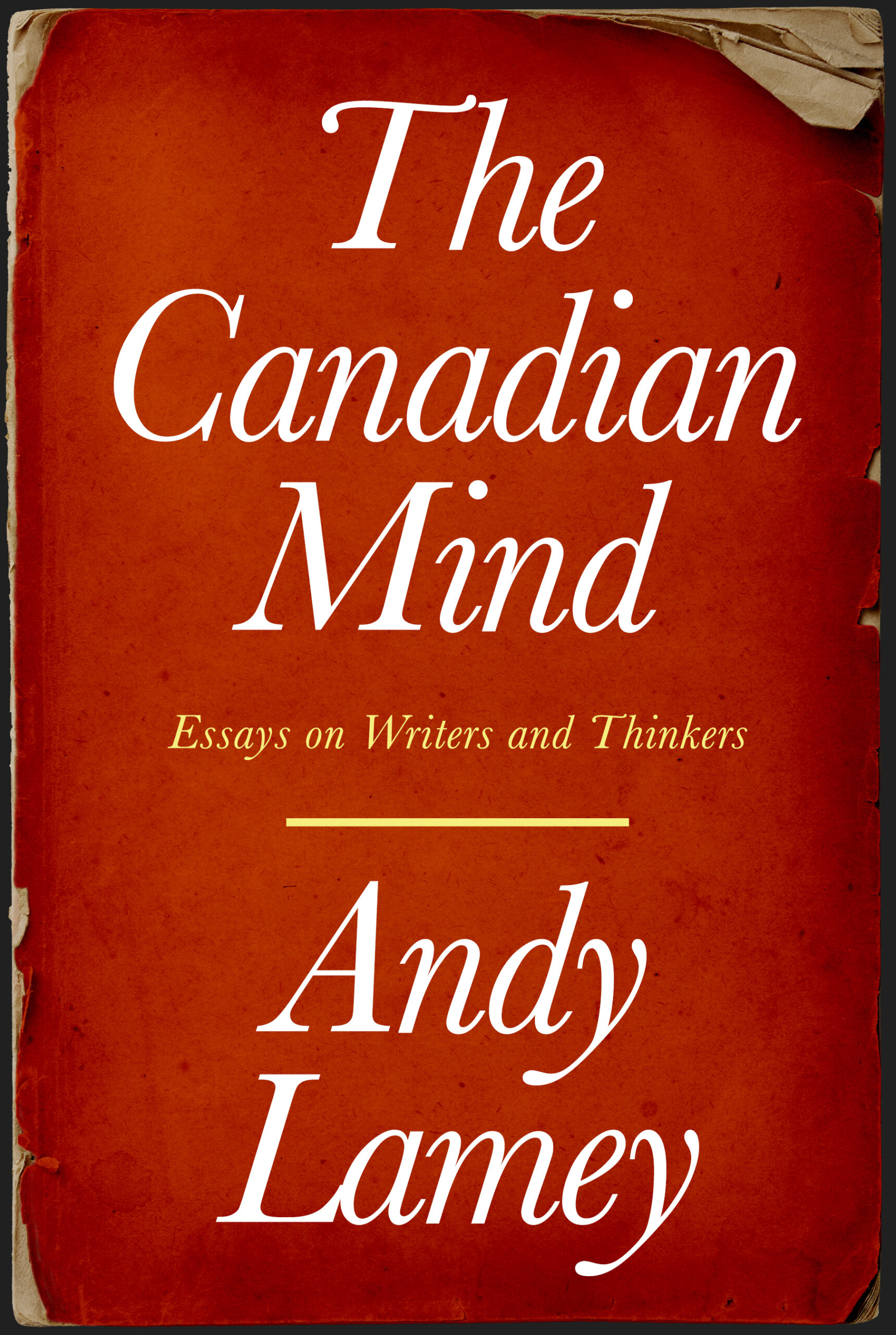 Adapted from The Canadian Mind: Essays on Writers and Thinkers by Andy Lamey. Copyright © 2023 Andy Lamey. Published by Sutherland House. Reproduced by arrangement with the publisher. All rights reserved.
Adapted from The Canadian Mind: Essays on Writers and Thinkers by Andy Lamey. Copyright © 2023 Andy Lamey. Published by Sutherland House. Reproduced by arrangement with the publisher. All rights reserved.What is Canada’s leading intellectual export? Much evidence suggests it is the philosophy of Will Kymlicka.
Over twenty years ago, the Wall Street Journal called Kymlicka a “global guru” due to his impact on lawmakers around the world, particularly in Europe. Since then, the influence of the Queen’s University philosopher has only grown. When Nepal went through an acrimonious debate about a new constitution, for example, the country’s largest English-language newspaper, the Kathmandu Post, editorialized in favour of incorporating Kymlicka’s framework of minority rights.
His influence has also been felt in Bolivia, where Indigenous people make up a majority of the population yet are underrepresented in the military, and where Kymlicka was called in to address Bolivia’s president and other dignitaries on how to make the army more inclusive. When the United Nations sponsored a workshop on African multiculturalism in Gaborone, the capital of Botswana, the organizers urged attendees to show up having read books written or edited by Kymlicka. Kymlicka has spoken to audiences at over 100 universities, and his work has been translated into more than thirty languages.
Kymlicka’s unprecedented impact is due, in part, to the focus of his work. He has long been centrally concerned with so-called national minorities: groups such as the Quebecois or Indigenous peoples, whose presence within a country’s borders is not the result of immigration but predates the country’s official founding. Policies designed to protect minority cultures have long given rise to the concern that they can disregard the rights of other members of the political community. Rather than embrace one value at the expense of the other, Kymlicka takes the claims of cultural protection and individual freedom equally seriously. In this way, Kymlicka, along with other scholars he has inspired who now build on his work, overcomes challenges to implementing minority rights in a liberal state that were long considered intractable.
Kymlicka’s theory has been deeply shaped by Canada’s history as the home of three different national communities, English, French, and Indigenous, living under a common set of laws. Canadian policy makers have had to improvise new solutions to the challenges presented by more than one nation sharing a government. When this improvising has resulted in workable measures, the principles on which those measures are based have not always been immediately clear. Canadian practices of accommodating national minorities, rather, have often come into being before anyone had formulated a well-worked-out theory justifying such practices and outlining what precise form they should take.
Kymlicka and other thinkers he has inspired spell out the principles of justice that have informed Canadian practice with clarity and rigour. In this way, his work puts an optimistic spin on Hegel’s image of the owl of Minerva extending its wings slowly at the falling of dusk. Kymlicka has captured Canadian political experience in thought and distilled it into a philosophy of global relevance.
Kymlicka came of age intellectually during the 1980s, when Anglo-American political philosophy was dominated by John Rawls and Ronald Dworkin. The two Americans defended traditional liberal values such as individual rights and procedural justice alongside a more modern commitment to a radically expanded welfare state. Rawls and Dworkin achieved prominence in the 1970s, when they dethroned utilitarianism as the leading view among political philosophers in the English-speaking world. By the 1980s, their influence had become hegemonic. This spawned a critical reaction on the part of a diverse group of thinkers who, despite their inevitable differences, emphasized community as a key value. Such a value, these “communitarian” critics charged, was one that philosophical liberals such as Rawls and Dworkin had woefully neglected.
As a student, Kymlicka was “hugely impressed” with the work of Rawls and Dworkin, which he viewed as combining “the best of the liberal commitment to individual autonomy with the social-democratic commitment to ending involuntary disadvantage.” But the liberal approach to language and culture faced a major challenge when it was applied to Canada.
In 1969, Pierre Trudeau’s government announced a plan to abolish “Indian” as a legal category. The Indian Act would be repealed, reserves would be converted to private property and sold to bands or their members, and Indigenous people would have no special rights, whether to self-determination, land, or anything else. The government said its new policy would “enable the Indian people to be free—free to develop Indian cultures in an environment of legal, social and economic equality with other Canadians.”
Trudeau’s proposal was inspired by the push for civil rights in the US. To the government’s surprise, however, it was met with intense resistance on the part of the policy’s supposed beneficiaries. Indigenous people viewed undifferentiated citizenship not as the culmination of their struggle for equality but as an excuse for the government to ignore their unresolved land claims and treaty rights. It was, in the words of Cree lawyer Harold Cardinal, “a thinly disguised program of extermination through assimilation.” Idealistic Canadian liberals thus seemed to face a dilemma. They could embrace liberalism or collective rights for Quebec and Indigenous people—but not both at once.
This dilemma became acute for Kymlicka when he was a graduate student at Oxford University and another Canadian philosopher, Charles Taylor, showed up at one of his seminars. Although not quite a communitarian, Taylor endorsed many of that school’s criticisms of mainstream liberalism, including that its commitment to individual rights was too rigid and dogmatic. During his visit, Taylor argued, in Kymlicka’s summary, that “Canadians could never endorse this theory of Rawls and Dworkin, this liberal egalitarian theory, because Canadians needed to provide collective rights for the Québécois, for Aboriginal peoples.”
Taylor rattled off all the collective rights—to language and self-government, land and treaty obligations—that were plainly incompatible with the American philosophers’ culturally neutral vision of justice. As Kymlicka listened, he grew anguished by the force of Taylor’s argument. “I was even more disturbed,” Kymlicka later wrote, “when Ronald Dworkin, who was at the seminar arguing with Taylor, agreed with him that liberal egalitarians could not endorse these collective rights.”
Kymlicka’s anguish resulted in Liberalism, Community and Culture (1989). Its central argument, a liberal defence of the value of community and culture, may sound unremarkable, but it was a landmark work in political philosophy. It showed that liberal support for collective rights was far more plausible than Rawls and Dworkin ever acknowledged.
Kymlicka began with a core aspect of the traditional liberal rationale for individual rights: each of us should be free to decide for ourselves what kind of life is best for us. This necessarily includes the freedom to re-examine our deeply held beliefs and adopt new ones. For liberals, such freedom is a precondition of a minimally adequate life. Without the freedom to live in accordance with our own plans, we will be deprived of a crucial prerequisite of self-respect.
So far, so familiar. Kymlicka, however, took the argument a step further. He pointed out how we actually decide among different conceptions of the good life. “This decision is always a matter of selecting what we believe to be most valuable from the various options available, selecting from a context of choice which provides us with different ways of life.” And that context of choice, Kymlicka argued, is provided by our culture.
“Our language and history,” Kymlicka wrote, “are the media through which we come to an awareness of the options available to us, and their significance; and this is a precondition of making intelligent judgements about how to lead our lives.” If that is the case, there can be a liberal rationale for protecting culture after all, whenever doing so is necessary to enable human beings to make sense of and choose among different life plans.
Kymlicka’s account of culture emphasized the centrality of language. If its status as the language of public life is collectively determined, in a way distinct from race and other aspects of our identity, this means that smaller languages and their corresponding cultures can be at risk of disappearing into larger ones. Because minority cultures have to worry about this outcome in a way that members of the majority do not, Kymlicka argued, considerations of fairness can justify the state stepping in to support smaller cultures. So in the case of Indigenous people, for example, it was appropriate for the law to restrict the ability of non-Natives to live on reserves or seek to serve on band councils. Similarly, it was appropriate for Quebec’s Law 101 to actively promote French as the language of public life as a bulwark against the long-term erosion of French. But not just any steps to protect a minority culture are permissible. A natural question to ask—and which many critics of minority rights have asked—concerns what happens once we allow the government to regulate who can own property on Native reserves or what the language of store fronts will be. Where will the government’s cultural powers stop? One reason Kymlicka’s theory has been so influential is that it indicated clear limits on what kind of measures governments could impose in the name of protecting minority cultures.
The measures that Kymlicka endorsed restricted the options available to non-Indigenous people or non-French speakers. Such limits are only justified to the degree that they can plausibly be said to make the situation of minority cultures more equal to that of the majority. Residency restrictions on reserves mean Native people will be the majority there, making it easier for them to preserve their language and culture. Similarly, measures to ensure French is the language of public life in Quebec seek a role for French broadly similar to that which English plays elsewhere in Canada.
Such policies extend a form of cultural security to Native communities and Francophones that members of the majority culture often take for granted. Such restrictions can thus more plausibly be thought of as legitimate forms of cultural protection than, say, a government program that subsidized Native people taking vacations to Italy, or one that banned Anglo-Montrealers from working in banks. Measures with no obvious connection to ensuring the stability of a minority culture, understood as possessing its own language, are nonstarters in Kymlicka’s view.
Kymlicka’s central concern was with the enduring existence of minority cultural communities, which can face threats to their survival that majority groups never have to worry about. In this way, his philosophy shares something with the literary criticism of Margaret Atwood and other cultural nationalists of the 1970s who championed the cause of Canadian literature and culture. Like theirs, his work stakes out and defends what we might think of as an underdog nationalism.
But whereas Atwood was concerned that Canadian identity not be made subservient to the power of the much larger country, the United States, with which it shares a continent, Kymlicka is sympathetic to the desire of the Quebecois and Indigenous people not to be subservient to the much larger cultural community, Anglophone Canada, with which they share a state. In both cases, nationalism is seen as a vehicle for protecting an identity that is at potential risk of disappearing into a larger other.
Kymlicka’s first book propelled him to intellectual prominence when not just Canada but many countries were debating how to accommodate minority nationalisms. Events such as the fall of the Berlin Wall saw previously suppressed national groups assert themselves in a wave of what commentators called a new world of “ethnic pandemonium.” Aside from the fateful coincidence of publishing a liberal defence of minority rights just when the entire world was suddenly consumed by the idea, Liberalism, Community and Culture also effectively ended the liberal-communitarian debate.
Criticism of Kymlicka’s own view, however, was not slow in coming. Kymlicka treats immigrants differently than national minorities. Unlike those of Quebecers and Indigenous people, the cultures and languages that newcomers bring with them are not entitled to measures meant to ensure that they can be sustained over many generations. Critics charged that Kymlicka was guilty of inconsistency. If one group needs a secure culture to make sense of the world, after all, why doesn’t the other?
Kymlicka’s answer to this and other challenges appeared in Multicultural Citizenship: A Liberal Theory of Minority Rights (1995). It drew attention to the fact that the vast majority of the global population, more than 97 percent, does not immigrate. Those who choose to do so are likely among the small number of human beings who can thrive in a new culture. In his new work, however, Kymlicka did much more than reply to his critics. He also presented a big new idea.
Whereas Kymlicka’s original argument for minority rights cited facts about minority cultures, he now cited a separate set of facts, about governments. Prior to Kymlicka, generations of liberals had argued that when it came to culture, the state should adopt a stance of “benign neglect.” Rather than favour or disfavour any particular one, the government should remove itself from the realm of culture altogether, leaving it up to individuals to decide what cultural activities or options to embrace. The liberal view thus had long been that culture should be treated much like religion. Kymlicka made a decisive break from liberal tradition by arguing that this stance was not only unattractive but incoherent.
Government institutions cannot avoid embracing culture. This is most obvious when it comes to language, which all governments must use to function. A crucial political question therefore turns on which language or languages will become the language of government, which, as Kymlicka pointed out, encompasses “the language of public schooling, courts, legislatures, welfare agencies, health services,” and many other institutions. A language of state enjoys a high level of security and is practically guaranteed to be passed down to the next generation. Conversely, when a language is not employed by public schools or other government institutions, this usually consigns it to marginalization.
Kymlicka further pressed his case against benign-neglect liberalism by noting other areas in which governments routinely favour one culture over another. Consider the fact that Christmas is a state holiday in Canada and the United States whereas Hanukkah and Diwali are not. Such arrangements are far from neutral on a cultural level (or a religious one, for that matter). This is but one of several ways in which liberal-democratic governments foster identification with a particular societal culture. When immigrants apply for citizenship, for example, they are often tested on their knowledge of their new country. Such tests, rather than being culturally neutral, encourage newcomers to identify with the history and traditions of the country in question, which usually entails some degree of identification with the cultural majority. A similar sense of identification is fostered by the flags and anthems states employ, the statues and landmarks they commemorate, and the histories they promulgate, which frequently give prominence to the dominant societal culture.
While it would be possible to reduce the degree to which governments favour particular cultures in this way, eliminating it entirely would likely be very difficult. And in the case of language, there does not seem any realistic possibility of governments treating them all neutrally, which would require every language being a language of state. Given that neutrality in the cultural sphere is a nonstarter, Kymlicka argued, a reasonable alternative approach is to view protections for national minority cultures as a kind of equalization. As states are likely to favour the majority in matters like holidays and history, and must inevitably do so with language, enshrining legal protections for national minority cultures can be justified as a way of evening the cultural playing field by actively seeking to prevent the erosion of national minority cultures.
Multicultural Citizenship was Kymlicka’s second pass at minority rights. Like his first book, it acknowledged clear and well-defined limits on how far state support for minority cultures could go. Although Kymlicka argued that states inevitably played cultural favourites, the correct response to this was not to endorse unlimited state intervention in matters of culture (let alone religion). But part of Multicultural Citizenship’s power comes from its unique effectiveness in highlighting the many ways in which cultural majorities enjoy advantages that had long been overlooked.
To take but one example, shortly before the book appeared, Canada had undergone a debate about whether Sikh members of the Royal Canadian Mounted Police should be permitted to wear turbans instead of Stetsons. Arguments against doing so were often framed in terms of holding everyone to a uniform standard. But as Kymlicka pointed out, Mounties, like police in many Western countries, have historically been permitted to wear wedding rings. In some branches of Christianity and Judaism, wedding rings are religious symbols, as is evident in the role they play in these denominations’ wedding ceremonies.
When police wear wedding rings for religious reasons, no one objects. Surely, this is, in part, because the religious cultures in question include that of the cultural majority. Multicultural Citizenship, like few books before it, made cultural favouritism like this visible. In theory, we could potentially eliminate it by denying police the right to wear wedding rings, but that seems petty. Kymlicka made a persuasive case that it was better to admit some flexibility in uniform requirements, especially if the result will be greater integration and inclusion of a visible minority. (In this way, his theory is at odds with Quebec’s Laicity Act, which, since 2019, has banned many civil servants from wearing religious symbols.)
Where Kymlicka’s first book was often concerned with pointing out the problems of communitarianism and other rival approaches, Multicultural Citizenship is a sustained presentation of his positive case for minority rights. As such, it is his definitive statement of liberal multiculturalism and the work that may have most contributed to Kymlicka’s global policy impact. If his previous book made Kymlicka a star, Multicultural Citizenship saw him explode into a supernova. It is among the most influential books—possibly the most influential—to come out of Canada in the past fifty years.





